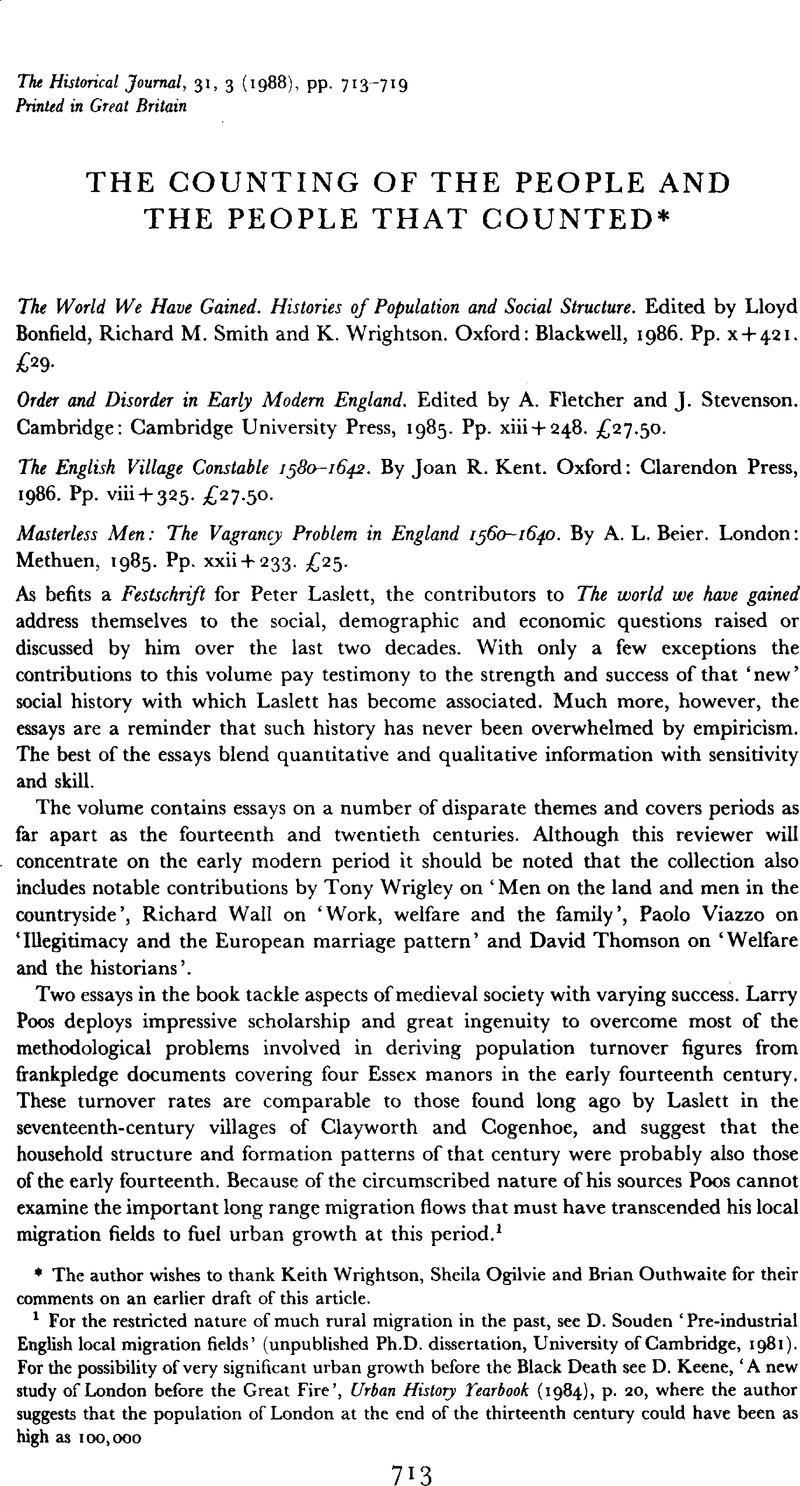Published online by Cambridge University Press: 11 February 2009

1 For the restricted nature of much rural migration in the past, see Souden, D. ‘Pre-industrial English local migration fields’ (unpublished Ph.D. dissertation, University of Cambridge, 1981)Google Scholar. For the possibility of very significant urban growth before the Black Death see Keene, D., ‘A new study of London before the Great Fire’, Urban History Yearbook (1984), p. 20Google Scholar, where the author suggests that the population of London at the end of the thirteenth century could have been as high as 100,000
2 See, for example, Glass, D. V. (ed.), London inhabitants within the wall 1695, London Record Society, II (1966), xxxiiiGoogle Scholar.
3 See Elliott, V. B., ‘Mobility and marriage in pre-industrial England’ (unpublished Ph.D. dissertation, University of Cambridge, 1978)Google Scholar.
4 For recent work on what Brodsky describes as some of the buttresses of the urban family, neighbourhood life and formal company structures, see Rappaport, S., ‘Social structure and mobility in sixteenth-century London, Parts I and II’, London Journal, IX (1983), 107–35, x (1984), 107–34CrossRefGoogle Scholar; Boulton, J., Neighbourhood and society: a London suburb in the seventeenth century (Cambridge, 1987)CrossRefGoogle Scholar.
5 For the popularity of churching in seventeenth-century London, see Boulton, , Neighbourhood and society, pp. 276–9Google Scholar. For fear of the pain of childbirth, see Mendelson, Sara H., ‘Stuart women's diaries and occasional memoirs’, in Prior, Mary (ed.), Women in English society 1500–1800 (London, 1985), p. 196Google Scholar.
6 For breastfeeding practices, see Fildes, Valerie, Breasts, bottles and babies (Edinburgh, 1986)Google Scholar.
7 See Wrightson, K., English society 1580–1680 (London, 1982), pp. 166–7Google Scholar for the social and economic factors producing social regulation of the sort mentioned here.
8 Churchgoers in South Lindsey in the nineteenth century displayed continuing attachment to ‘an abundance of pagan magic and superstition’, see, Obelkevich, J., Religion and rural society: South Lindsey 1825–1875 (Oxford, 1976), pp. 259–312Google Scholar.
9 Thus one of the author's grounds for denying that most vagrants were migrants seems to be that vagrancy legislation originated in the second half of the fourteenth century ‘a well-known period of population decline’. The period was, however, one of enhanced labour mobility as the author concedes subsequently, pp. xxi, 3, 5.
10 For an anthropological approach to this problem, see Houston, R., ‘Vagrants and society in early modern England’, Cambridge Anthropology (1980), 18–32Google Scholar.
11 See the passage, ‘to exercise power, then, power to be free of the society of England, to count at all as an active agent in the record we call historical, you had to be a gentleman’, Laslett, P., The world we have lost (London, 1965), p. 27Google Scholar.
12 In the wealthier areas of Stuart London Valerie Pearl has estimated that one adult male in three held office in the wardmote system, and she has pointed out that this had important implications for political and social stability in the period. See, Pearl, Valerie, ‘Change and stability in seventeenth-century London’, London Journal, v (1979), 16, 27Google Scholar. For other recent work which stresses the extensive involvement of the middling sort in local government, see Wrightson, , English Society, pp. 153–4Google Scholar; King, P., ‘Decision-makers and decision-making in the English Criminal Law, 1750–1800’, Historical Journal, XXVII, 1 (1984), 52–6Google Scholar; Herrup, Cynthia, ‘Law and morality in seventeenth-century England’, Past and Present, CVI (1985), 108Google Scholar.